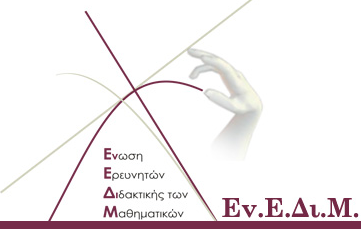This item is provided by the institution :
 Greek Association of Researchers of Mathematics Education
Greek Association of Researchers of Mathematics Education
Repository :
Research in Mathematics Education
| ΕΚΤ eJournals

